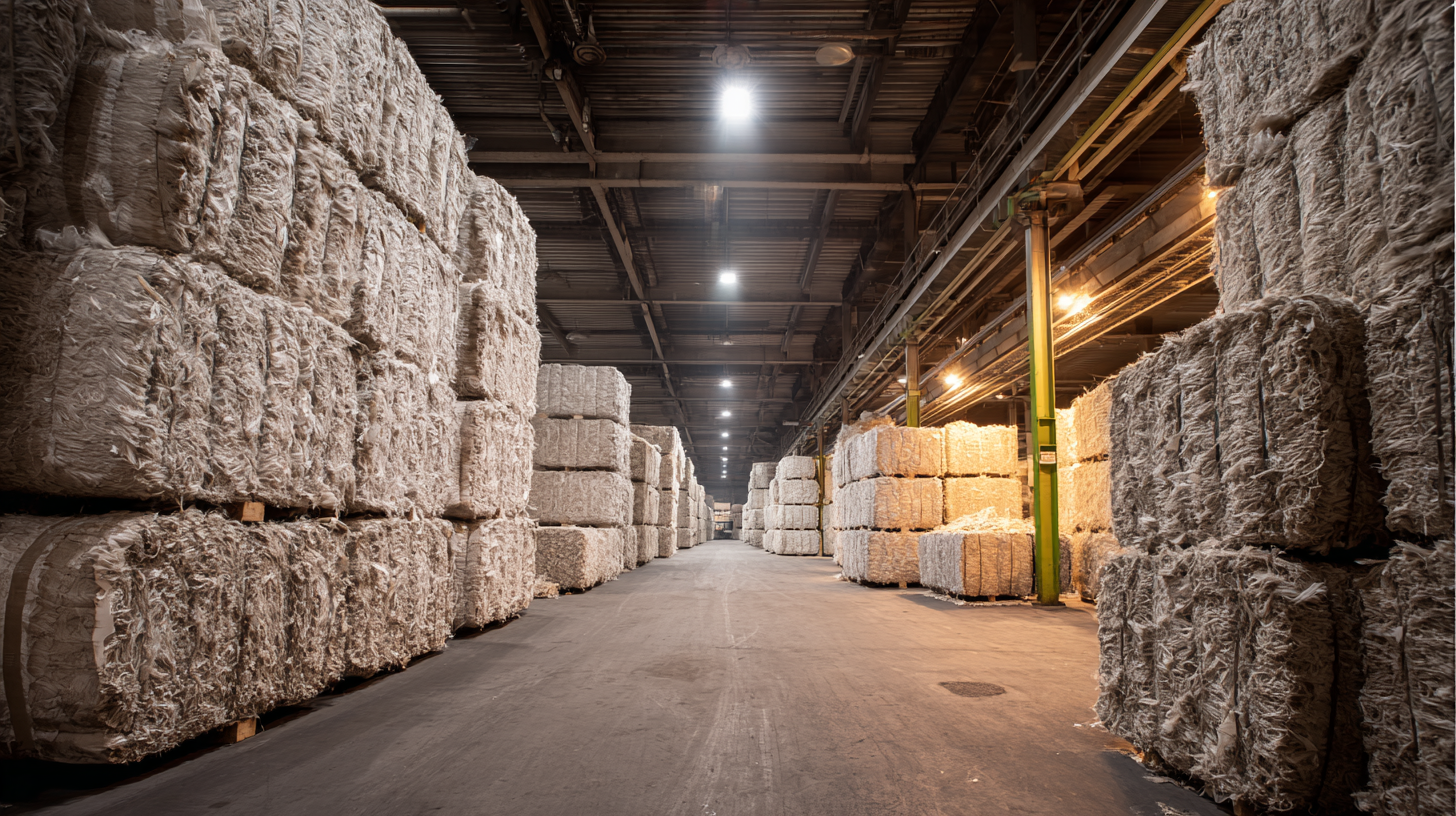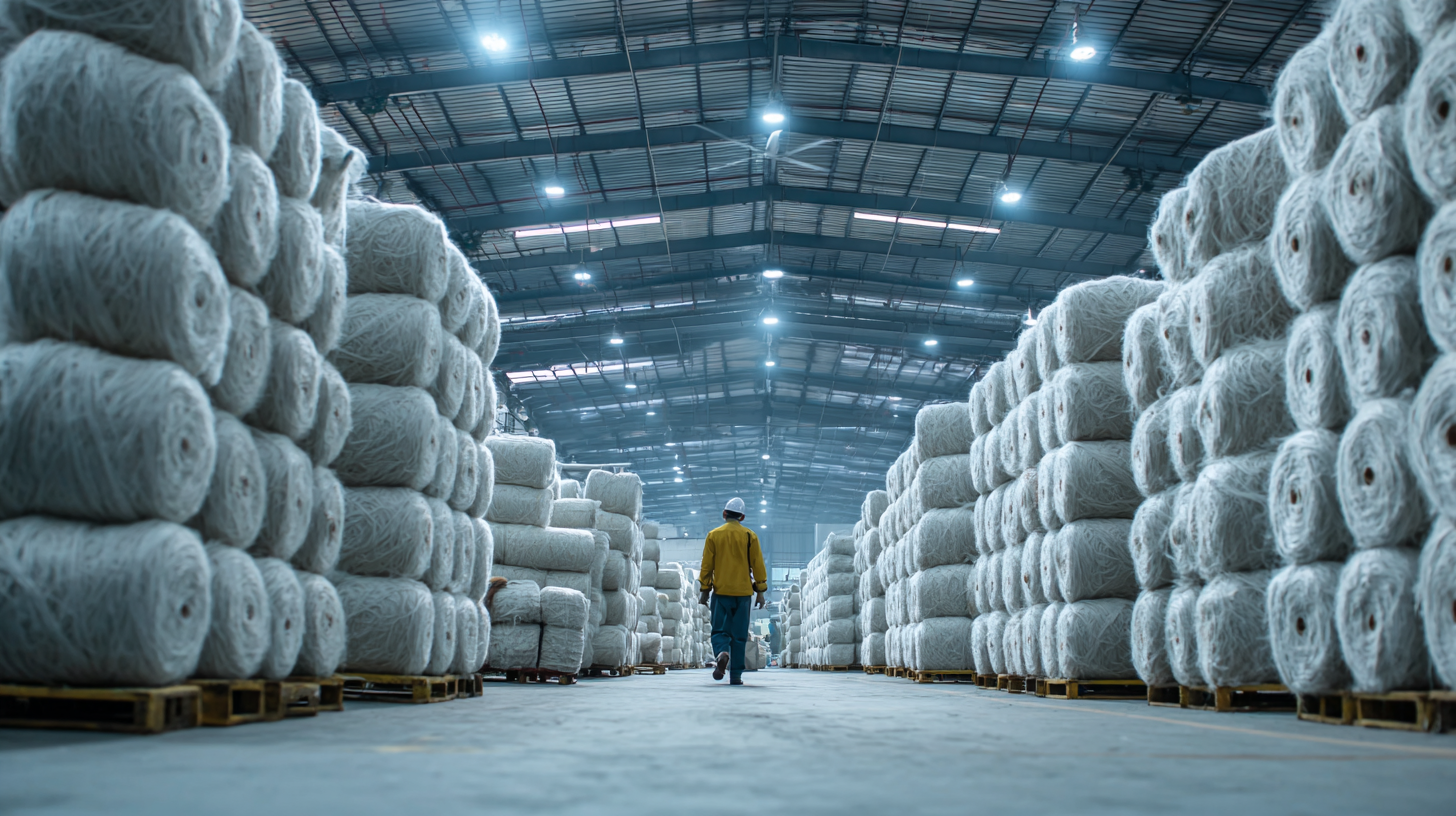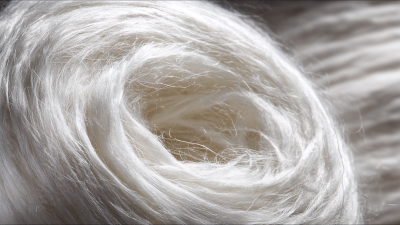
How to Harness the Benefits of Recycled Psf Fiber in Sustainable Manufacturing
In today's rapidly evolving manufacturing landscape, the integration of sustainable practices has become increasingly crucial for businesses aiming to reduce their environmental impact. One of the most significant advancements in this realm is the use of Recycled Psf Fiber, a sustainable material derived from post-consumer plastics. This innovative fiber not only contributes to waste reduction by repurposing discarded materials but also offers a range of benefits that can enhance product quality and performance. Harnessing the potential of Recycled Psf Fiber in manufacturing processes can lead to the creation of durable, eco-friendly products that appeal to environmentally conscious consumers. By adopting strategies to effectively incorporate this remarkable material, manufacturers can not only meet sustainability goals but also gain a competitive edge in the market.

This guide explores practical approaches to harness the benefits of Recycled Psf Fiber in sustainable manufacturing, highlighting its transformative role in building a greener future.
Understanding Recycled PSF Fiber and Its Role in Sustainable Manufacturing
Recycled polyester staple fiber (PSF) is gaining traction in sustainable manufacturing due to its ability to reduce waste and resource consumption. According to a 2022 report from the Textile Exchange, the production of recycled polyester can save up to 60% of the energy required compared to virgin polyester, significantly lowering carbon emissions. This material, derived from post-consumer plastic waste, not only mitigates landfill overflow but also conserves vital resources. By incorporating recycled PSF into their production processes, manufacturers can contribute to a circular economy while meeting consumer demand for sustainable products.
To effectively harness the benefits of recycled PSF fiber, manufacturers should consider the following tips:
1. **Supplier Collaboration:** Partner with reliable suppliers that specialize in recycled materials to ensure consistent quality and availability of PSF fiber.
2. **Product Design:** Innovate product designs that maximize the use of recycled PSF without compromising on performance or aesthetics, appealing to environmentally conscious consumers.
3. **Lifecycle Assessment:** Conduct a comprehensive lifecycle assessment to measure the overall environmental benefits of using recycled PSF, helping to communicate these advantages to consumers and stakeholders effectively.
By focusing on these strategies, manufacturers can optimize their use of recycled PSF fiber, enhancing sustainability in their operations while contributing positively to the environment.
Benefits of Recycled PSF Fiber in Sustainable Manufacturing
Identifying the Environmental Benefits of Using Recycled PSF Fiber
 Recycled PSF (Polyester Staple Fiber) has emerged as a sustainable alternative in manufacturing, providing significant environmental benefits. By utilizing post-consumer waste, such as plastic bottles, recycled PSF reduces reliance on virgin materials, thereby minimizing energy consumption and greenhouse gas emissions. The recycling process itself consumes less energy compared to the production of new fibers, contributing to lower carbon footprints for manufacturers who adopt this practice.
Recycled PSF (Polyester Staple Fiber) has emerged as a sustainable alternative in manufacturing, providing significant environmental benefits. By utilizing post-consumer waste, such as plastic bottles, recycled PSF reduces reliance on virgin materials, thereby minimizing energy consumption and greenhouse gas emissions. The recycling process itself consumes less energy compared to the production of new fibers, contributing to lower carbon footprints for manufacturers who adopt this practice.
Tips for integrating recycled PSF Fiber into your manufacturing process include sourcing from certified suppliers to ensure quality and sustainability. Collaborate with industry partners to share best practices on recycling and reducing waste. Additionally, consider educating your team on the environmental impacts of synthetic materials and the positive changes they can promote by switching to recycled alternatives.
Another critical step is to perform life cycle assessments (LCAs) when choosing materials for new projects. This allows manufacturers to truly understand the environmental impacts of their choices and incentivizes them to prioritize sustainable practices. By embracing recycled PSF, companies not only contribute to environmental conservation but also enhance their brand reputation as responsible and eco-conscious players in the market.
Implementing Best Practices for Sourcing Quality Recycled PSF Fiber
Implementing best practices for sourcing quality recycled PSF (polyester staple fiber) is crucial for sustainable manufacturing. Companies should start by establishing strong relationships with trusted suppliers who prioritize eco-friendly practices. This includes investigating the sourcing methods of recycled materials, ensuring they meet recognized environmental standards, and have certifications that guarantee the quality and sustainability of their products. Regular audits and compliance checks can help maintain these standards and encourage suppliers to adopt advanced recycling technologies.
Additionally, manufacturers should consider integrating a comprehensive evaluation process when selecting recycled PSF fiber. This involves assessing not only the cost but also the environmental impact, performance characteristics, and the supplier's track record in sustainability. Collaborative partnerships with suppliers can lead to innovation in recycling processes, resulting in higher quality fibers. By focusing on these best practices, manufacturers can effectively reduce their carbon footprint while enhancing the overall value proposition of their products in an increasingly eco-conscious market.

Integrating Recycled PSF Fiber into Existing Manufacturing Processes
Integrating recycled polyester staple fiber (PSF) into existing manufacturing processes is a transformative step toward sustainable production. By reusing PSF, manufacturers can significantly reduce their dependence on virgin resources, thus lowering carbon footprints and resource depletion. The integration process begins with auditing current supply chains and identifying opportunities where recycled PSF can replace conventional fibers without compromising product quality. This requires collaboration with suppliers who specialize in recycled materials to ensure a consistent and high-quality fiber supply.
Moreover, incorporating recycled PSF into manufacturing also involves revisiting and possibly modifying machinery and techniques to accommodate the different properties of recycled fibers. For instance, adjustments in spinning processes and dyeing techniques may be necessary to align with the characteristics of recycled materials. Emphasizing employee training on new procedures and sustainability practices can further ensure a smooth transition. The result is not only a more environmentally friendly production line but also potential cost savings in raw material procurement, ultimately enhancing the overall efficiency and reputation of the manufacturing entity in the era of eco-conscious consumerism.
How to Harness the Benefits of Recycled PSF Fiber in Sustainable Manufacturing
| Benefit | Description | Impact on Manufacturing | Percentage of Material Savings |
|---|---|---|---|
| Resource Conservation | Using recycled PSF fiber reduces the need for virgin polyester, conserving natural resources. | Lowers raw material costs and environmental footprint. | 30% |
| Energy Efficiency | Recycling PSF fiber typically requires less energy than producing new fibers from petroleum. | Decreases manufacturing energy consumption and costs. | 25% |
| Waste Reduction | Incorporating recycled fibers reduces landfill waste and promotes a circular economy. | Enhances corporate sustainability image and compliance with regulations. | 40% |
| Product Quality Improvement | High-quality recycled PSF fibers can enhance the durability of products. | May lead to higher customer satisfaction and reduced returns. | 20% |
Measuring the Impact of Recycled PSF Fiber on Product Lifecycle Sustainability
The incorporation of recycled polyester staple fiber (PSF) into manufacturing processes has shown significant potential in enhancing product lifecycle sustainability. According to a report by the Textile Exchange, utilizing recycled fibers can reduce greenhouse gas emissions by up to 45% compared to virgin fibers. This drastic reduction is critical in addressing climate change, as the textile industry is one of the largest contributors to carbon emissions, responsible for approximately 10% of global emissions. The shift towards recycled PSF not only minimizes environmental impact but also promotes circular economy principles by diverting plastic waste from landfills.
Moreover, the environmental benefits extend to water usage, with the same Textile Exchange report highlighting that recycled PSF uses approximately 20% less water during production than conventional polyester. This is particularly important as the industry grapples with water scarcity issues. By measuring the lifecycle assessment (LCA) of products made with recycled PSF, manufacturers can gain insights into resource savings and the overall sustainability of their products. This data-driven approach enables companies to make informed decisions that align with consumer demands for more sustainable practices, thus setting a benchmark for future developments in eco-conscious manufacturing.
Related Posts
-

The Future of Hydrophobic Natural Fibers in Sustainable Textile Innovation
-

Maximizing Value with Best Fiber Black Through Superior After Sales Service and Cost Efficient Repairs
-

7 Facts About Best Sustainable Sanitary Pads That Every Global Buyer Should Know
-

How to Maximize the Benefits of Hydrophilic Fiber for Enhanced Material Performance
-

Exploring the Future of Best Polypropylene Concrete Innovations and How to Leverage Them by 2025
-

Discover the Unique Features and Applications of Best Fiber PP Products: A Comprehensive Guide



